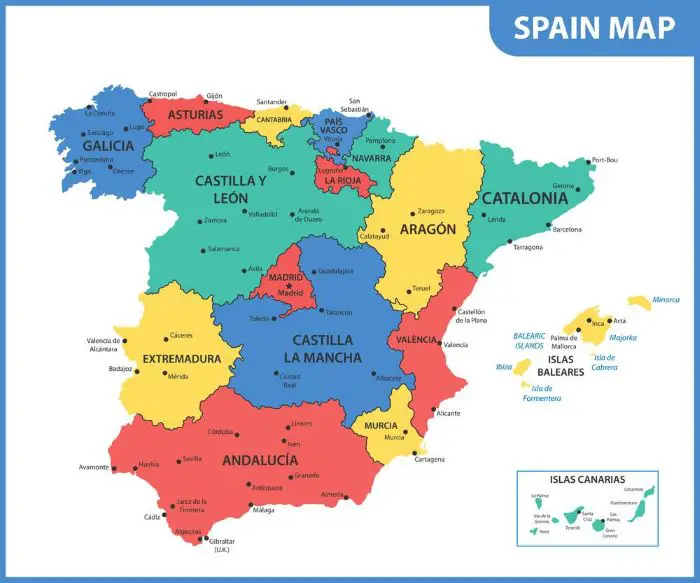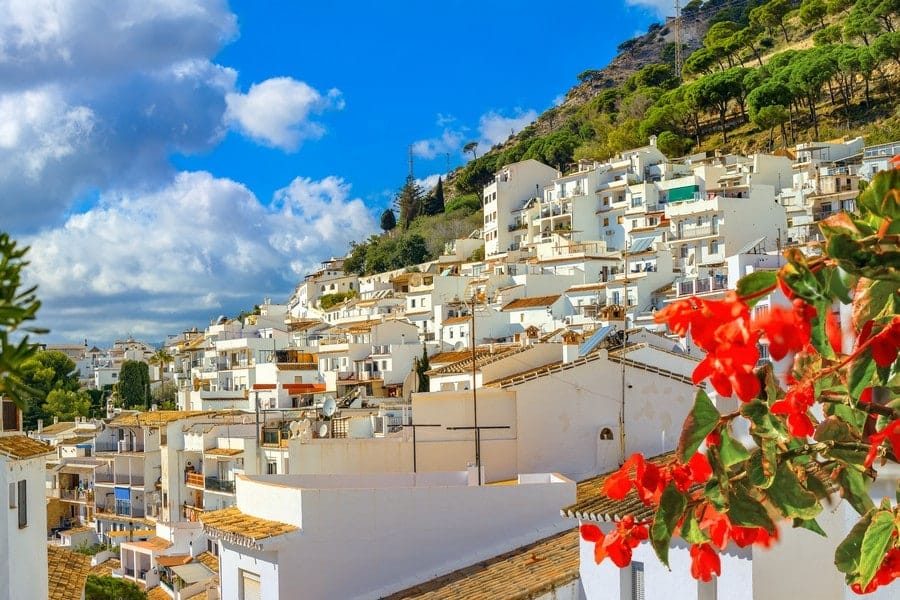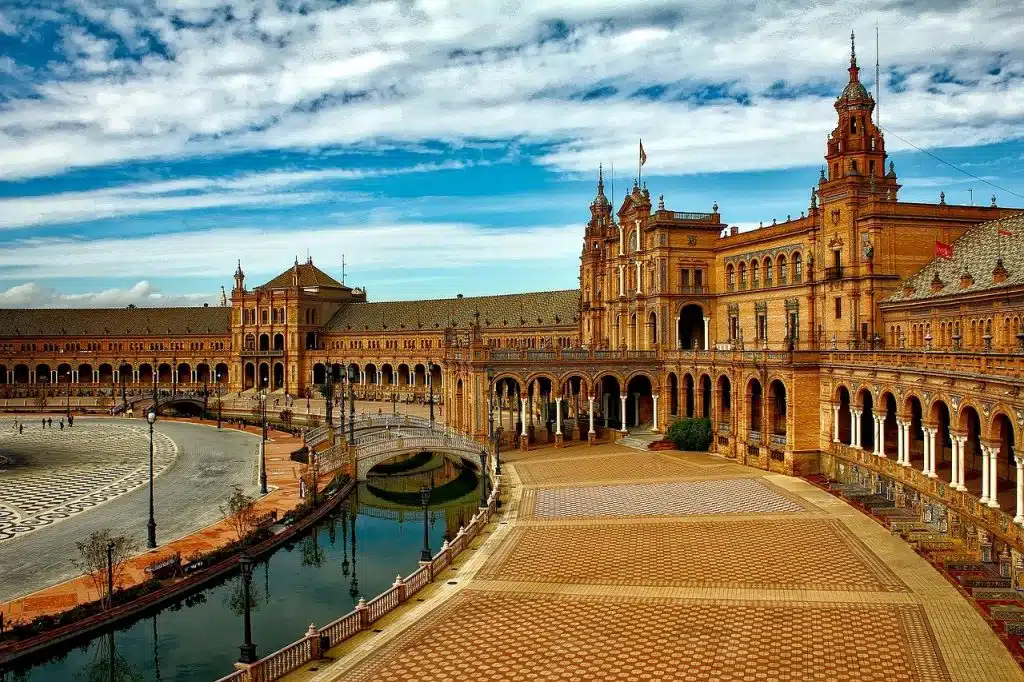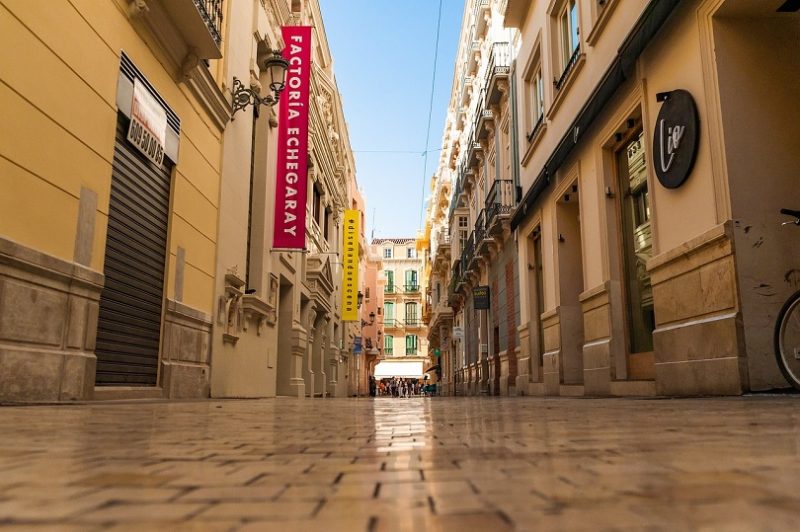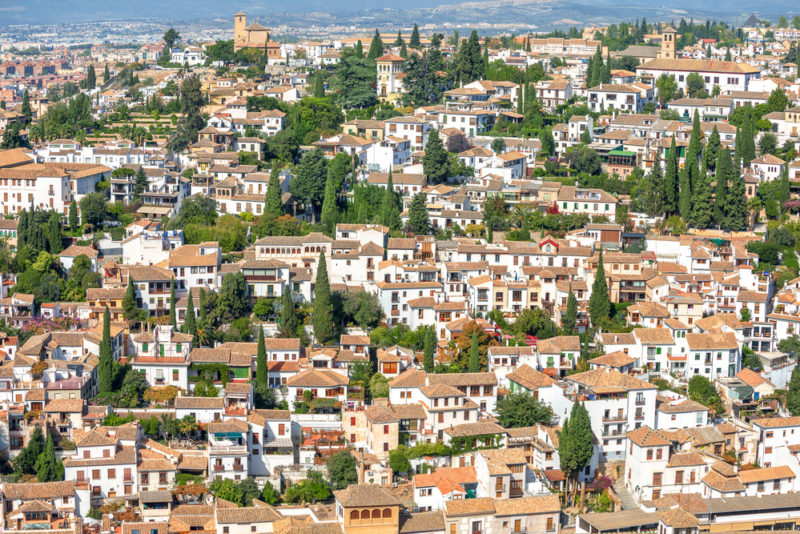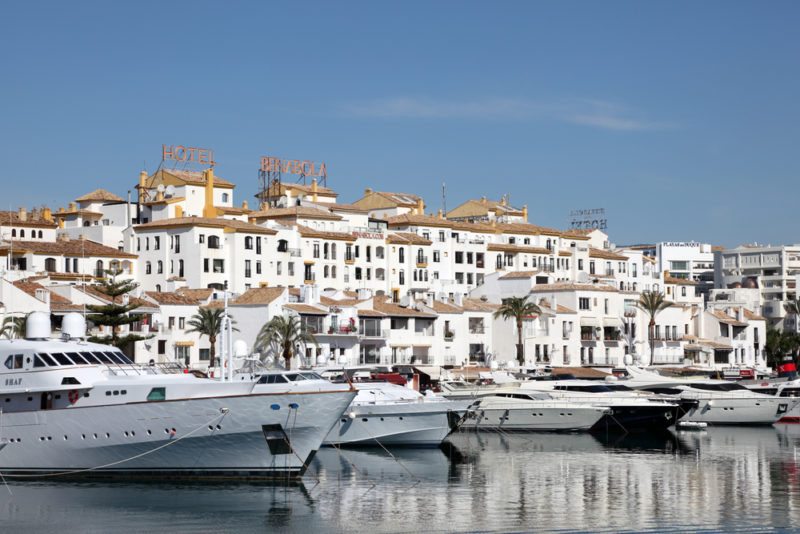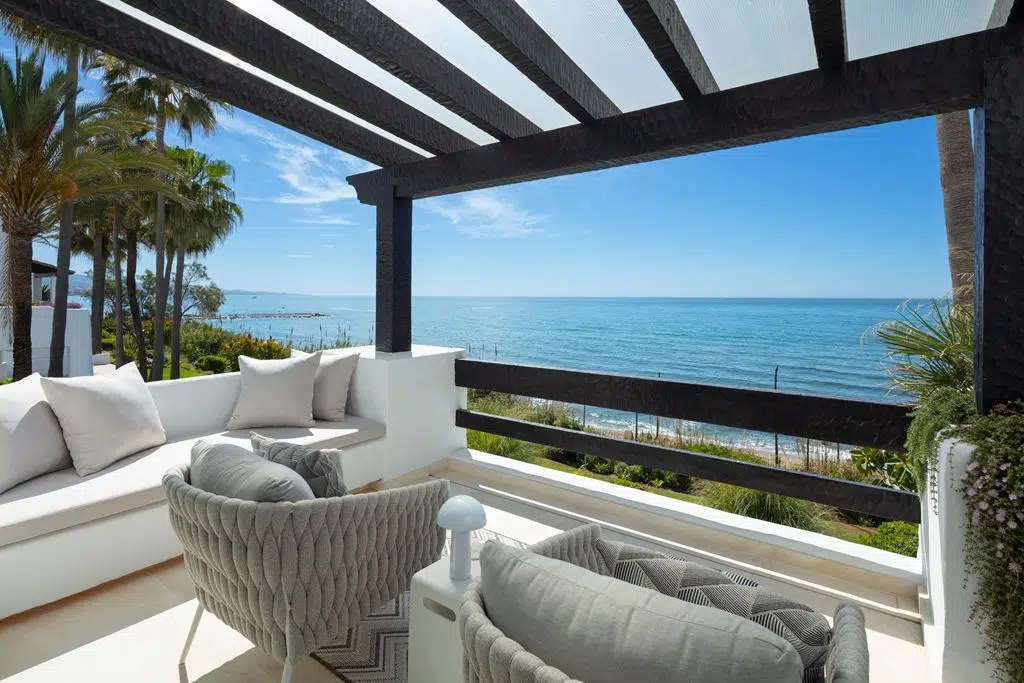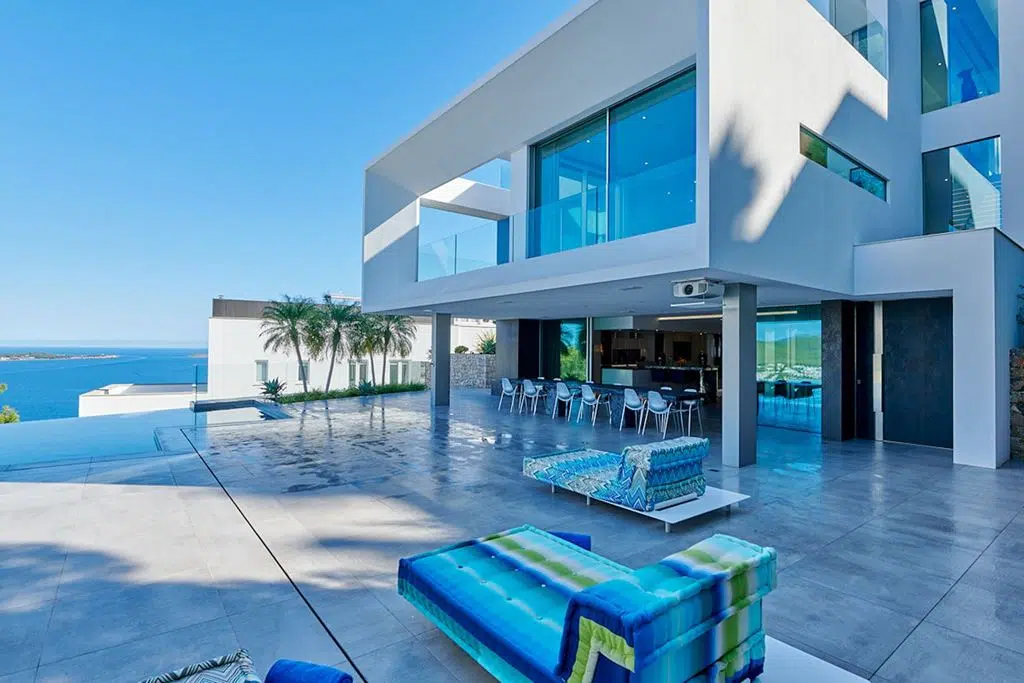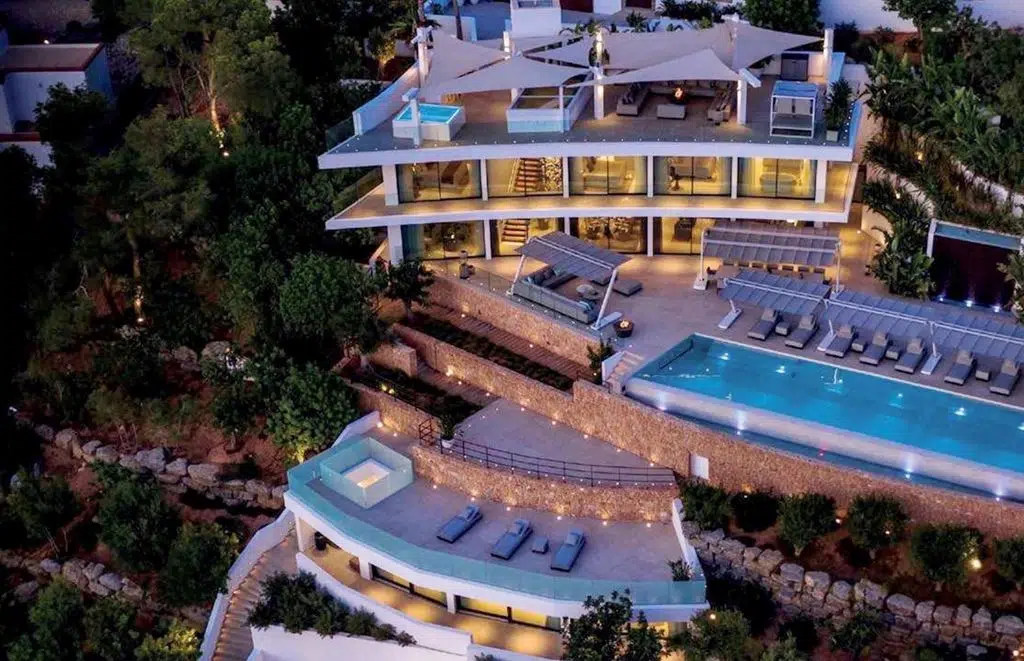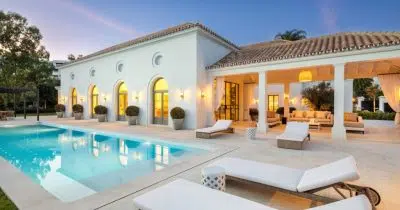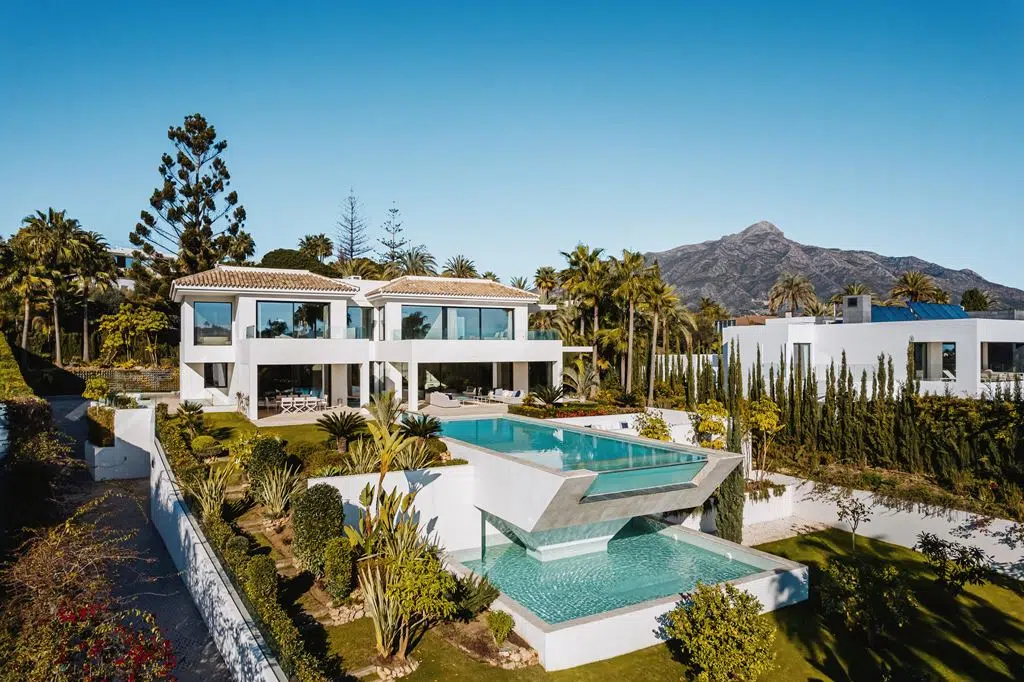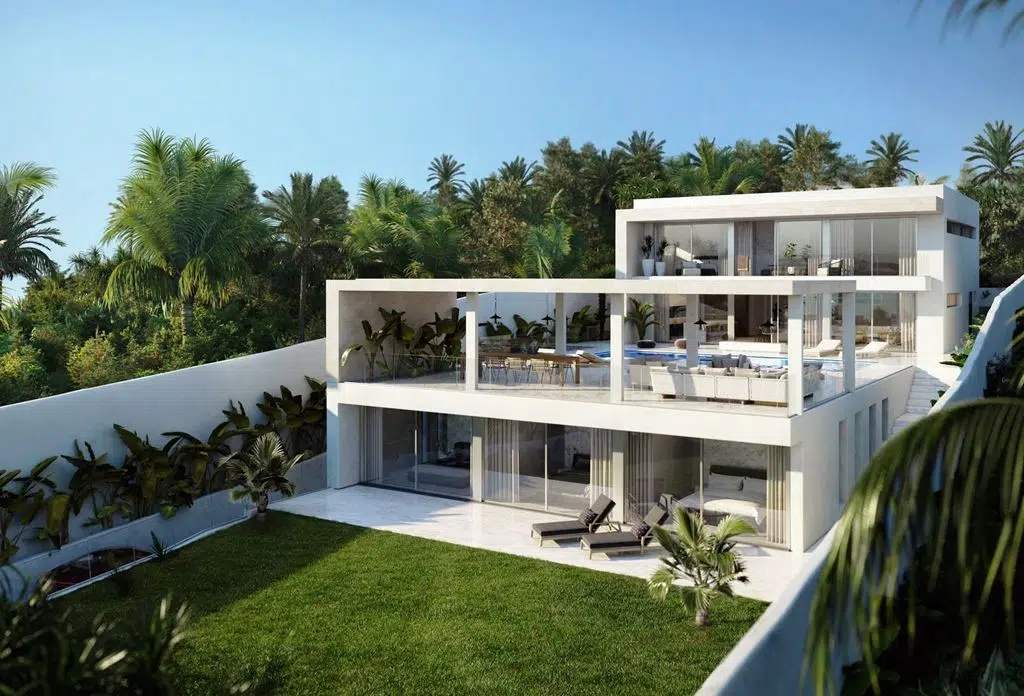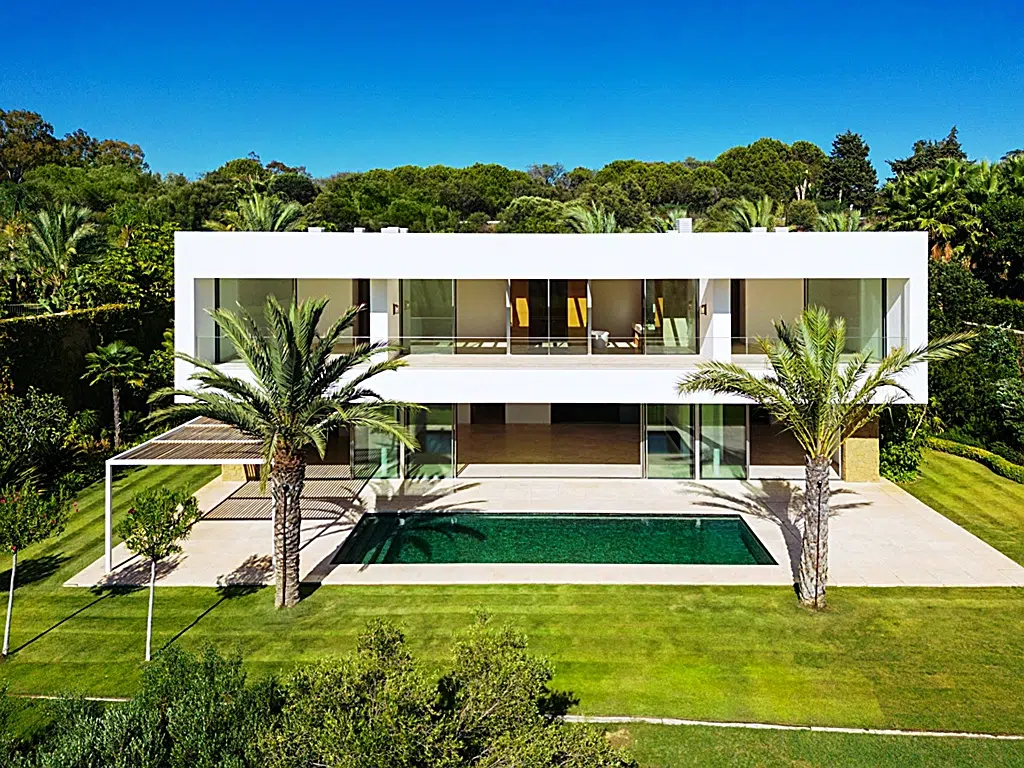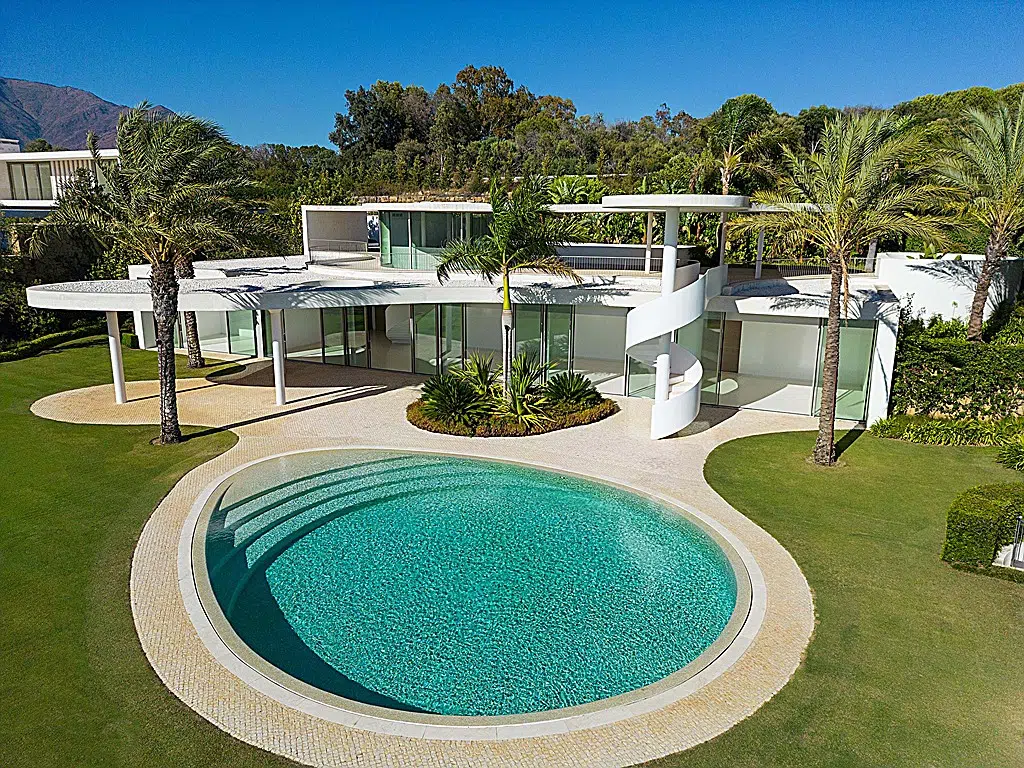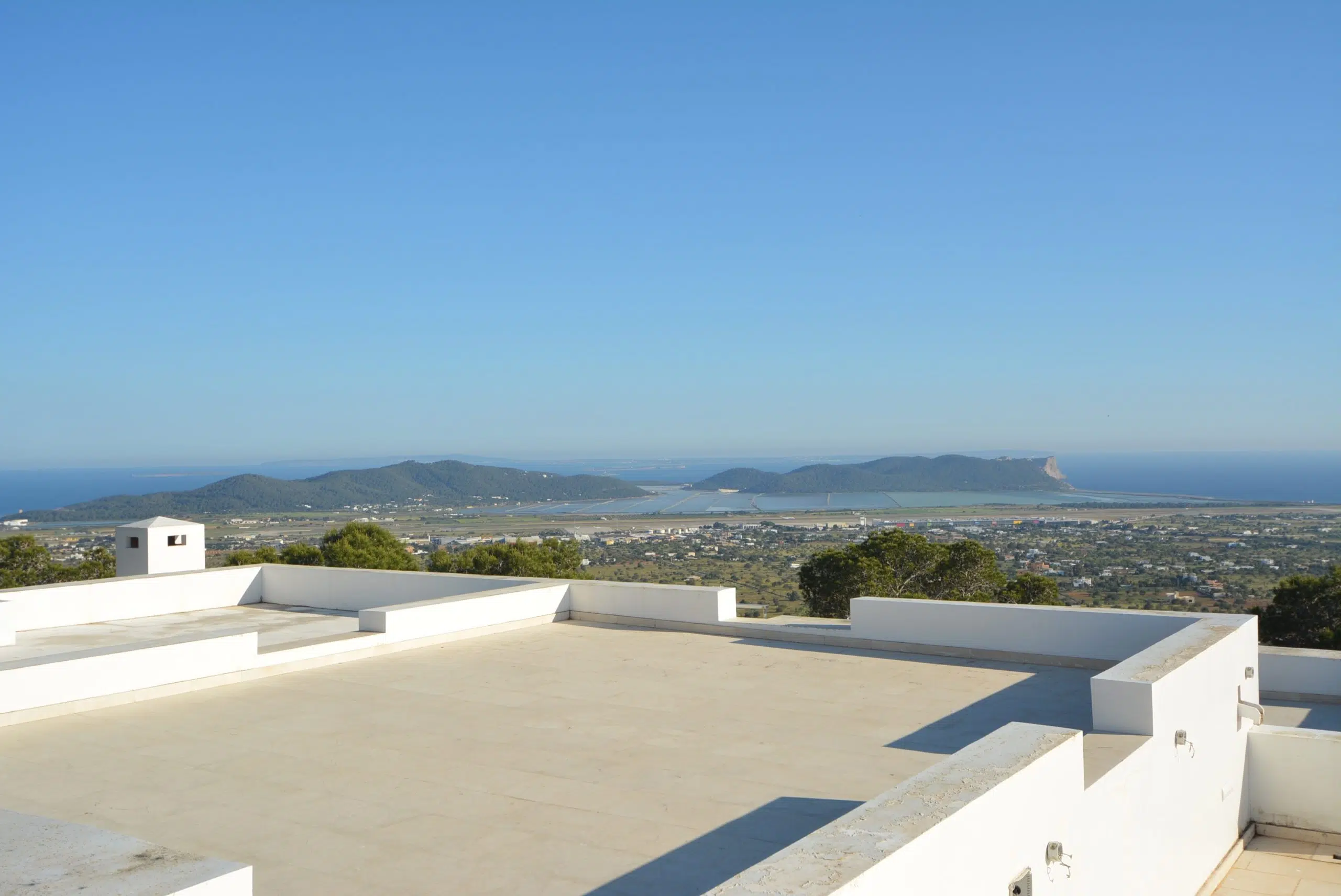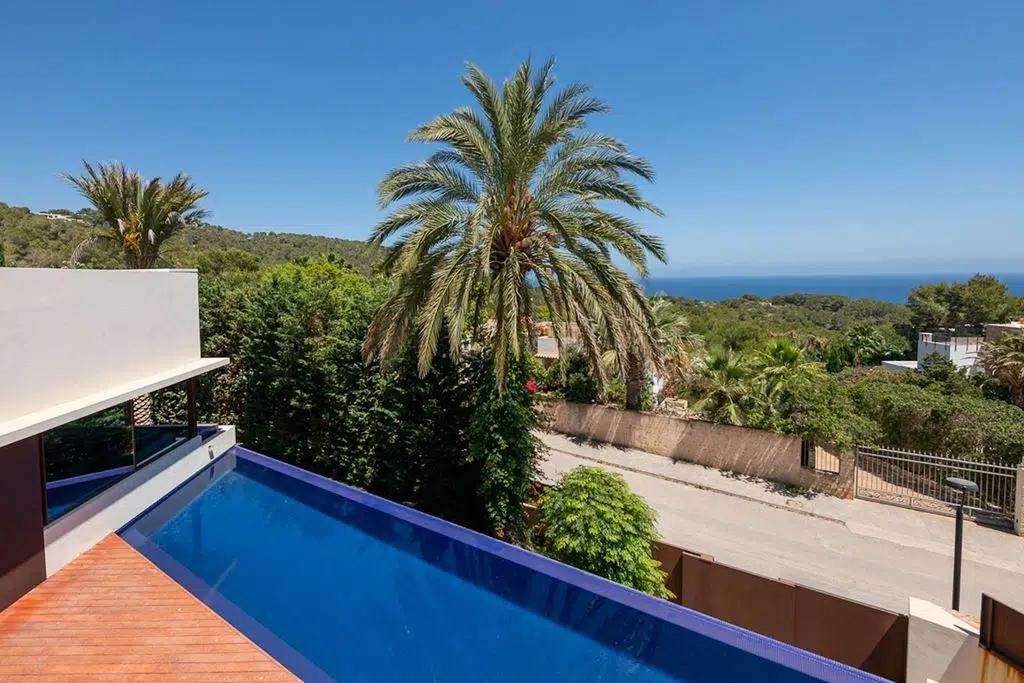The best places to live in Andalusia present one of the most popular retirement destinations in the world. Living in Andalusia, Spain, offers enriching experiences with laid-back Mediterranean lifestyles, a warm climate, beautiful landscapes, and welcoming communities. Abundant sunshine also creates year-round outdoor lifestyles for beach days, mountain hiking, or exploring villages.
Andalusia’s history, ancient monuments, cobblestoned streets, and heritage are evident in traditional architecture and festivals. From the magnificent Alhambra in Granada to the Mezquita in Córdoba, Andalusia boasts many architectural wonders showcasing Islamic, Roman, and Moorish influences. Andalusian streets also come alive with fiestas, flamenco performances, and lively outdoor markets, providing ideal retirement destinations.
Living costs in Andalusia are more affordable than in other parts of Europe, and housing options range from apartments in bustling cities to quaint country homes and seaside villas. While Andalusia’s infrastructure includes modern transportation networks, healthcare and educational institutions.
The region’s central location also allows quick travel to other iconic Spanish destinations like Seville, Malaga, and Granada, as well as neighbouring countries like Portugal and Morocco. Whether it’s a weekend getaway to the picturesque white villages of Sierra de Grazalema or road trips along the Costa de la Luz, there is always something new to discover within reach.
So, enough of the reasons why Andalusia is a great place to live, let’s look at the areas within the region that are perfect for retirement and making a new home.
The Best Places to Live in Andalusia Spain
Costa Del Sol and Costa De La Luz Coastlines
The first thing to know when looking for somewhere to live is that the Andalusia region includes the Costa Del Sol and Costa De La Luz. Costas are places in Spain that cover the coastline. These are where you will find your beachfront coastal resorts. Many retirees in Andalusia head to the coastline, specifically the Costa Del Sol, which has somewhat more of a famous reputation. Costa De La Luz sits in the western Andalusia region. She faces the Atlantic, while Costa del Sol sits along the southern coast of Spain’s Andalusia region and faces the Mediterranean.
Both beckon with sun-drenched beaches, azure waters, and coastal towns. As one of the most popular retirement destinations, with idyllic Mediterranean weather, landscapes, and numerous attractions, the Costa del Sol attracts more retirees. Stretching over 150 kilometres of Andalusian coastline, from bustling resort towns like Marbella and Torremolinos to hidden coves and tranquil stretches of coastline, Andalusia’s beach experiences suit every taste.
Beyond the beaches, towering mountains, including the iconic Sierra de Mijas and Sierra de las Nieves, provide breathtaking backdrops to coastal towns. Lastly, enjoy over 70 golf courses designed by renowned architects, which offer challenging fairways and views.
Inland Villages (pueblos blancos) and White Houses
In the heart of Andalusia, Spain, are enchanting inland villages and pueblos blancos (white towns) that offer tranquil and authentic living. The inland villages of Andalusia captivate with their cobblestoned streets, picturesque settings and captivating architecture. In contrast, cobblestoned streets and narrow alleys lead to hidden squares.
Arcos de la Frontera village sits on a rocky cliff overlooking the Guadalete River, and many say this village is the prettiest in Spain. Narrow streets lead uphill to Plaza del Cabildo, where the town hall and a 15th-century church stand proudly, and sweeping views from Mirador de la Peña Nueva are simply awe-inspiring.
Castellar de la Frontera in Cádiz features breathtaking views of Guadarranque Reservoir. One standout feature of Castellar de la Frontera, the 13th-century medieval castle, sits proudly atop the hill, symbolising the village’s Moorish history. Walking through the town, you’ll discover quaint squares, small plazas, and cosy corners.
The place sits within Los Alcornocales Natural Park, with cork oak forests, wildlife, and hiking trails. Castellar de la Frontera also excels in olive oil production, and you can visit local mills to sample refined olive oils. For peaceful retreats from bustling tourist hotspots, Castellar de la Frontera reflects the authentic charm of rural Andalusia.
Almonaster la Real in Sierra de Aracena Natural Park, in the Huelva province, features the Mosque of Almonaster la Real. This 10th-century mosque testifies to the village’s Moorish past. The striking architecture, including horseshoe arches and intricate stonework, displays the region’s Islamic heritage. The village’s square, Plaza de Aníbal González, oozes nostalgia. Almonaster la Real hosts several festivals. One crucial celebration is the Moros y Cristianos festival, where locals reenact historical Moors and Christian battles.
Cazalla de la Sierra village in Sierra Norte Natural Park, in Seville, is surrounded by lush forests, olive trees, rolling hills, and picturesque landscapes. Cazalla de la Sierra is about tranquil retreats away from city life and a historical centre. With its striking bell tower, Nuestra Señora de Consolación Church stands proudly. At the same time, local artisanal products include ceramics, olive oil, and local liqueurs. Living in Cazalla de la Sierra offers a peaceful community lifestyle.
Spanish Cities and Beautiful Towns in Andalusia
Seville – Largest City in Andalusia
Seville city, the capital of Andalusia, seamlessly blends tradition and modernity. The city’s iconic landmarks, like Seville Cathedral, Royal Alcazar, and Plaza de Espana, highlight the illustrious past. Seville also earns fame world-famous Feria de Abril and the captivating Semana Santa processions. With picturesque neighbourhoods, plazas, and a thriving food scene, Seville has culturally rich environments for dynamic city lifestyles.
Malaga for Digital Nomads
Often called the “capital of the Costa del Sol,” it combines coastal beauty with cosmopolitan atmospheres. Situated on the Mediterranean Sea, this Spanish town offers beaches, a bustling port, and a cultural scene. Malaga city features world-class museums, including the Picasso Museum and historic centre with narrow streets, tapas bars, and nightlife. Malaga’s warm climate, excellent infrastructure, and diverse international community are perfect for beachside living and urban amenities.
Granada – Home of Moorish Architecture
Nestled at the foot of the Sierra Nevada Mountains, Granada city earns fame for the Alhambra palace and enchanting Moorish quarter called Albaicin. Because of the large student population, Granada City’s history and youthful and lively atmospheres create a unique ambience. Granada’s cultural experiences range from flamenco performances in the Sacromonte neighbourhood to traditional tapas crawls in the bustling city centre. The proximity of Granada to the Sierra Nevada also provides access to outdoor activities like skiing, hiking, and mountain biking.
Province of Cadiz
Cadiz has beautiful beaches, a lively atmosphere, and a rich maritime heritage. As Spain’s oldest continuously inhabited city, Cadiz’s old town features grand plazas and historical monuments. Carnival celebrations are famous throughout Spain. Cadiz’s laid-back lifestyles include long walks along the beach promenade and indulging in fresh seafood.
Medina Sidonia is the historic town of Cádiz. Medina Sidonia’s history dates from ancient times. The strategic location made the place necessary for various civilisations, including the Phoenicians, Romans, Moors, and Christians. Discover Roman ruins, medieval walls, and centuries-old churches.
The well-preserved historic centre is a delight to wander through. Indeed, Medina Sidonia exudes authenticity. One notable landmark in Medina Sidonia is the Castle of Medina Sidonia, also called Alcazar Fortress, which sits atop the hill. The nearby Parque Natural de los Alcornocales’s hiking trails lead through lush forests and rolling hills, providing opportunities to connect with nature and enjoy tranquil surroundings.
Marbella – The Popular Destination in Spain for Retirees
Living in Marbella is an enticing experience of luxury and natural beauty. The town boasts beautiful beaches with golden sands and crystal-clear waters to soak up the sun, indulge in water sports, or enjoy leisurely promenade strolls. Marbella’s iconic Puerto Banús marina also features luxurious yachts, high-end boutiques, and renowned restaurants.
Marbella’s historic centre, Casco Antiguo, features narrow streets, picturesque squares, and whitewashed buildings. Wander through the Old Town, discover Orange Square (Plaza de los Naranjos), and other cultural activities. Marbella features impressive golf courses, beach clubs, stylish bars, and upscale restaurants catering to discerning tastes. At the same time, art galleries and cultural events provide opportunities for artistic expression and enrichment.
Infrastructure and services are excellent, with international schools, modern healthcare and amenities. Supermarkets, boutiques, and shopping centres cater to all needs. In contrast, sports and leisure activities offer active and healthy living opportunities, including tennis clubs, fitness centres, and equestrian facilities.
Historical Andalusian Architecture in Cordoba
Cordoba ranks highly when considering beautiful cities, cultural activities and ancient monuments. Steeped in history and located along the beautiful Guadalquivir River, Cordoba enchants everyone. One of Cordoba’s most famous attractions, Mezquita-Catedral, a grand mosque-cathedral, showcases exquisite Islamic and Christian architectural styles.
Living in Cordoba means strolling through the historic centre, a UNESCO World Heritage site, where narrow alleyways lead to hidden plazas adorned with flowers, cafes, and local boutiques. Cordoba’s annual festival, the Patio Festival, sees residents open the doors to beautifully decorated patios, allowing visitors to experience Andalusian architecture and fragrant displays of flowers. Cordoba Guitar Festival and the Flamenco Festival showcase Andalusia’s deep musical roots.
Living in Cordoba’s city centre means immersing oneself in community and warmth. Residents often gather in city squares, like Plaza de la Corredera or the Plaza de las Tendillas, to socialise with friends and neighbours.
Guadalquivir River, which winds through the city, offers scenic walking and cycling paths, perfect for leisurely strolls or energetic workouts. The nearby Sierra de Córdoba provides outdoor activities, including hiking, mountain biking, and horseback riding.
Spacious Living in Ronda – Andalusia
This enchanting town, perched atop a dramatic gorge in the Andalusian mountains, offers tradition with modern comforts. Ronda’s historic centre, with cobblestone streets and whitewashed buildings, creates atmospheres of timeless beauty. The most iconic landmark, Puente Nuevo (New Bridge), spans the El Tajo Gorge with breathtaking views. Residents take pride in their town’s heritage and are passionate about preserving traditions. The annual Feria Goyesca festival sees locals donning traditional attire and participating in equestrian displays and bullfighting events.
The culinary scene focuses on traditional Andalusian cuisine, and the central market, Mercado de Abastos, is where to source fresh local produce, artisanal cheeses, and other gastronomic delights at affordable costs. The annual Ronda Romántica festival recreates the 19th century with historical reenactments, parades, and traditional music and dance performances. Life in Ronda is complemented by tranquillity and a slower pace. Rhonda’s small size allows for relaxed lifestyles, with residents enjoying leisurely walks through historic streets, conversing with neighbours, and savouring the pleasures of daily life.
Andalusian Delights of Jerez de la Frontera
Jerez in Cádiz province in Andalusia, Spain, is known for cultural activities, flamenco, sherry wine, and equestrian traditions. Jerez excels in sherry wine, a cornerstone of the city’s economy and culture for centuries. The city’s bodegas (wineries) highlight the wine-making process and hold tasting sessions for visitors to immerse themselves in local viticulture traditions.
Jerez’s historic centre screams for architectural wonders. The Alcázar of Jerez Moorish fortress features beautiful gardens and panoramic views. Jerez Cathedral impresses everyone with mixed Gothic, Baroque, and Neoclassical styles. Jerez was also the birthplace of flamenco, an Andalusian cultural art form. Numerous venues display passionate and soulful performances. The annual Flamenco Festival, held in February, showcases world-class artists.
Equestrianism is another integral part of Jerez’s identity. The Royal Andalusian School of Equestrian Art holds spectacular equestrian shows called “How the Andalusian Horses Dance,” where riders and horses perform intricate choreographies. The city’s museums, art galleries, and cultural centres highlight historical and artistic heritage. The Archaeological Museum, Flamenco Museum, and Tío Pepe Sherry Visitor Center are just a few cultural offerings enriching the city’s tapestry.
Nerja – Popular Retirement Destination
One of Nerja’s most famous attractions is Balcón de Europa, a scenic viewpoint jutting out into the sea and providing panoramic views. Balcón de Europa is also busy with street performers, local artists, and cafes lining the promenade. Playa Burriana, the largest and most famous beach, features numerous water sports activities, beach bars, and restaurants. Playa de Maro, just east of Nerja, is more secluded and pristine.
Nerja old town exudes traditional Andalusian charm. Streets, lined with whitewashed houses and interspersed with cosy tapas bars, boutique shops, and artisanal craft stores, lead to Plaza Cavana and Plaza de la Ermita. The nearby Natural Park of Sierras de Tejeda, Almijara, and Alhama provides wildlife and outdoor adventures with scenic trails and breathtaking viewpoints. Quality of life in Nerja is enhanced by many amenities, with healthcare, schools, sports centres, and shopping areas.
Tarifa in the Andalusian Region of Spain
Tarifa, at the southernmost point of mainland Spain in Cádiz, nestles between the Mediterranean Sea and the Atlantic Ocean. Playa de los Lances and Playa de Valdevaqueros are particularly popular among windsurfers and kiteboarders. The historic quarter, enclosed within ancient city walls, reveals hidden plazas, quaint squares, and historic landmarks like Guzmán el Bueno Castle.
With close proximity to Africa, North African influences are evident in cuisine and music. Local restaurants serve traditional Spanish and Moroccan flavours, while street performers and musicians blend Flamenco and Arabic sounds.
Tarifa sits within Parque Natural del Estrecho natural park featuring diverse ecosystems, including forests, sand dunes, and cliffs. This haven for birdwatchers, hikers, and nature lovers, boasts nature trails and migratory birds.
Regarding practicalities, Tarifa amenities and services cater to residents’ needs with supermarkets, shops, healthcare, and educational institutions. Transport also connects to other cities in Spain, with regular ferry services to Morocco and easy access to the rest of the Costa de la Luz and Andalusia.
Summary – Why live in Andalucía
Mild Andalusian Climate: Andalusia’s mild climate is characterised by long, sunny summers and mild winters. The region enjoys 300 days of sunshine annually, making the place ideal for outdoor activities, beach visits, and a pleasant year-round lifestyle.
Natural Beauty in Andalusia: From the Sierra Nevada Mountain range to beaches and picturesque countryside landscapes dotted with olive groves and vineyards, there is no shortage of scenery to explore and enjoy.
Rich History and Culture: Andalusia has been influenced by various civilisations, including the Romans, Moors, and Christians, resulting in blended architectural styles, traditions, and festivals. Andalusia screams of interesting historical stories from the Alhambra in Granada to the Mezquita in Cordoba and the Alcazar in Seville.
Andalusian Activities: Andalusians are known for their love of festivities and celebrations. The region hosts numerous colourful festivals like Feria de Abril in Seville, Carnival of Cadiz, and Corpus Christi processions in various towns.
Outdoor Activities: Andalusia includes plenty of outdoor activities. Whether hiking in the Sierra de Grazalema Natural Park, skiing in the Sierra Nevada, or enjoying coastal water sports, Andalusia caters to recreational activities.
Affordable Cost of Living: Compared to other European regions, Andalusia has more affordable living costs. Housing prices, daily expenses, and services are often more budget-friendly.
Well-connected Transportation: Andalusia has excellent transportation infrastructure, including international airports, modern highways, and an extensive train network. This makes it convenient to travel within Andalusia and explore other parts of Spain and Europe.
Andalusian Cities: One need not think they are short of choices if urban living is your dream in Spain. Andalusian cities deliver the best urban landscapes, making them ideal for retirees.
Speak to Our Agents about Living in Andalusia
Are you dreaming of owning property and living in the Andalusia region of Spain? Andalusia is one of Spain’s most popular retirement destinations, with fantastic views, historical monuments, and warm Mediterranean climate. Andalusia will deliver whether you’re searching for a quaint countryside retreat, stylish beachfront villa, or historic townhouse. Contact us to discuss or ask questions about the best places to live in Andalusia. Also, see our portfolio of properties for sale in Andalusia. Use the contact details to find out more or arrange viewings.
More Popular Retirement Destinations in Spain
Costa Blanca: On Spain’s southeast coast, Costa Blanca features sweeping views and coastal towns. With over 200 kilometres of coastline, the Costa Blanca is another destination for retirees in Spain. In addition to the coastline, Costa Blanca’s towns and cities offer history, culture, and gastronomy. Alicante, the capital city, features a waterfront promenade, a historic castle, and an old town quarter. Other notable towns include Altea, with whitewashed houses and a bohemian atmosphere, and Denia, with sandy beaches and a bustling port.
